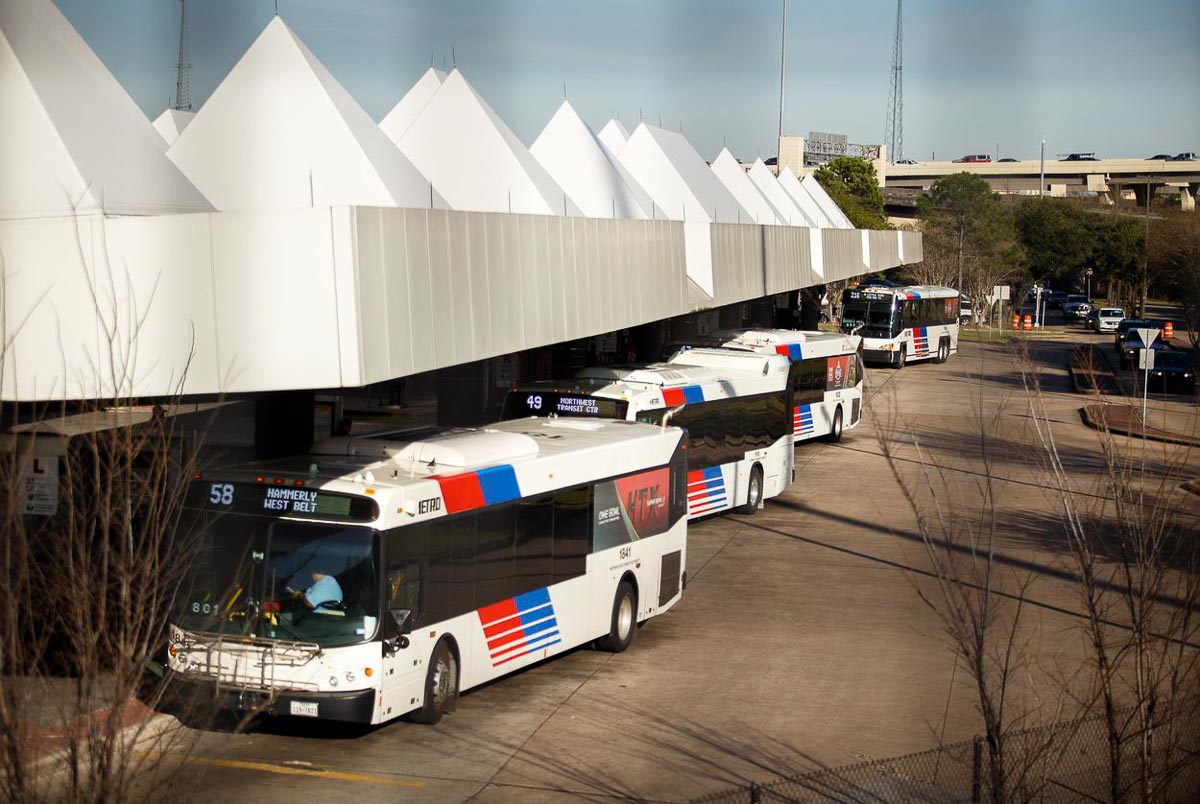Of course, one month of data isn’t enough information to reach a meaningful verdict about the system. But it’s intriguing to see how Houstonians are reacting to the changes.
To recap: in August, the Houston-area’s transit agency made major changes to its bus network, replacing a hub-and-spoke system with one that looked like a grid. It also increased the number of high-frequency routes and expanded weekend service. Nearly every bus route changed.
The latest figures show that weekend ridership has, in fact, increased quite a bit after the overhaul, as was intended. Planners believed there was demand for higher-frequency service on weekends, and they’ve got some early support for their case. Saturday ridership increased 3.2 percent, from September 2014 to September 2015, and Sunday ridership surged 19.7 percent. Both are higher than they’ve been in recent years.
But weekday ridership fell 8.4 percent to the lowest point it’s been in recent years, leading overall ridership on the local bus system to tick down 3.9 percent.
How bad is that news for the new system? It may be too early to tell. Since the onset of the bus network overhaul, planners insisted they would need to continue making adjustments to the system after the changes took effect in mid-August.
And importantly, there were other changes in the transit system as a whole since last September.
For one, METRO opened two new light rail lines that were specifically intended to carry people who had previously relied on buses. The two new light rail lines carried 7,415 passengers each average weekday in September. Those lines didn’t exist a year ago.
Second, the overhaul also eliminated some bus lines that were too similar to the existing light rail Red Line, and ridership on that line increased by 16.2 percent, or 7,938 average weekday riders, since last year. Some of those passengers might have previously been riding buses.
Still, there was a slight decrease in overall ridership – a 1.4 percent dip – combining bus and rail usage.
(It’s worth nothing that gasoline is about 30 percent cheaper in the Houston area today than it was a year ago, another factor that maybe influencing ridership.)
As more data comes in, it will be worth keeping an eye on whether the early, positive signs with weekend ridership keep up, whether local bus ridership numbers increase as people get used to the new system, and what effect having three operational light rail lines has on rider behavior.
It’s also important to consider that these ridership numbers reflect the number of boardings, which isn’t exactly the same – or as meaningful – as the number of trips.
Before METRO rolled out its new system, patrons frequently complained that the network's hub-and-spoke configuration forced them to travel into downtown, transfer to another bus, and then travel back out of downtown in order to reach their final destination. In almost every practical respect, these transfers were costly and inefficient. Riders had to travel a further distance – downtown is out of the way for many riders – and they had to wait for their next bus to arrive.
Riders transfer between local buses for free, so it's not as though these transfers increased the transit authority's operating budget. Transfers do, however, contribute to ridership counts. The automatic passenger counters on METRO’s buses count people who pass through the bus doors, regardless of whether these passengers recently boarded another bus.
Without other sources of data, it’s tough to tell if the number of trips (the number of boardings minus the number of transfers) has meaningfully changed.
It’s entirely possible that transfers have decreased. Though the new network does not promise – or even seek – to eliminate transfers altogether, it replaces the hub-and-spoke system with a grid configuration, so riders who once travelled in and out of the downtown hub on different buses may now have a more direct route. And a grid system should, at least in theory, prevent trips requiring more than one transfer.
If the redesigned bus network connects the same number of riders to their destinations with fewer transfers, a dip in weekday boardings is hardly a negative sign.

